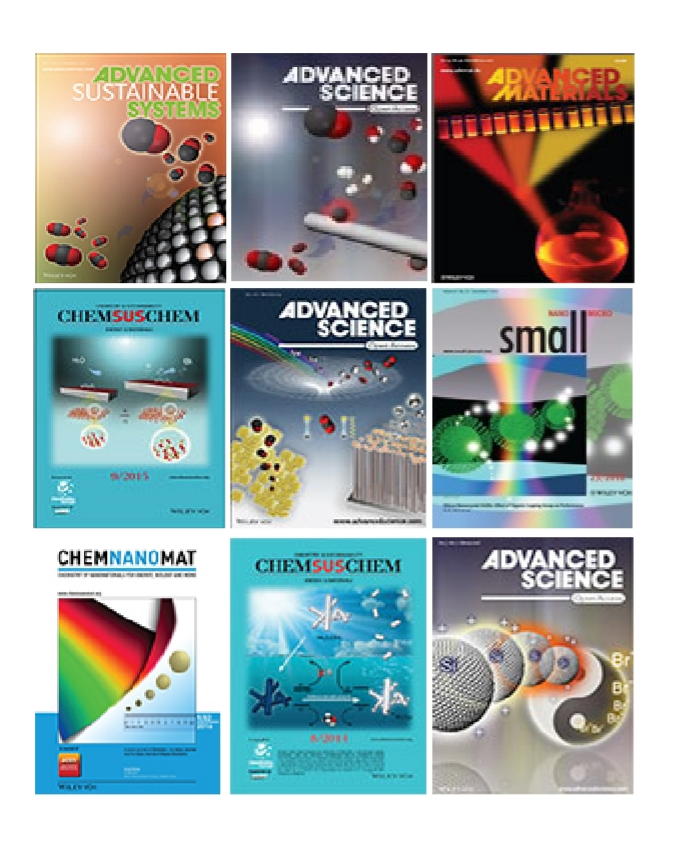
Recent Advances
Innovative, significant and technologically relevant contributions having emerged from this early phase of our research in the field of solar fuels can be summarised as follows:
- Discovery and development of novel classes of nanostructured metal oxide, metal-metal oxide and metal oxide-metal oxide materials that enable efficient photochemical and photothermal heterogeneous catalytic hydrogenation of CO2 to CO, CH4 and CH3OH, using the entire range of the solar spectrum;
- Experimental and theoretical studies of the energetics and dynamics of the "excited state" surface chemistry and catalytic reactions responsible for solar-powered hydrogenation of CO2;
- Recognition that frustrated Lewis pairs comprising proximal Lewis base hydroxyls and coordinatively unsaturated Lewis acid metal sites can exist in the surface of nanostructured metal oxide photocatalysts, and that these pairs are able to function as the photoactive sites in heterolytic H2 dissociation to form surface metal-hydride and metal-hydroxide sites. This proves to be a key step in the heterogeneous hydrogenation of CO2, where the ‘solar advantage’ is found in the enhanced Lewis basicity and Lewis acidity of the excited state compared to the ground state, which decreases the activation energy for the rate determining CO2 reduction step;
- Chemical tailoring of ‘designer defects’ in nanostructured metal oxides, which facilitate optimisation of solar-powered heterogeneous CO2 hydrogenation;
- Enabling photocatalyst and photoreactor engineering to improve the efficiency of solar-powered heterogeneous CO2 hydrogenation.
This CO2-to-synthetic fuels phase of our research has also turned out to be a fruitful research endeavor for my group, resulting in many breakthrough papers in high-impact journals, as seen in our portfolio of 2014-2017 publications.
Going Forward
Our work to date has been aimed at understanding the concepts and principles that underpin the gas-phase, light-assisted heterogeneous CO2 reduction reaction. These early studies have set the stage for the next phase of our research, namely, discovery and optimization of high performance nanostructured catalysts for the solar-powered heterogeneous hydrogenation of CO2 to synthetic fuels. In particular, it is essential to evaluate their activity, selectivity and stability, surface chemistry, kinetics and mechanisms under ideal reactor operating conditions of pressure, temperature, gas composition and flow rate. With this knowledge, best-performing photocatalysts can be scaled, and photoreactors designed, to enable the development of lab-scale demonstration units, and ultimately, pilot-scale plants for the conversion of CO2 to synthetic fuels. The focus of our planned research will be on the discovery of next-generation CO2 conversion materials, through both experimental and theoretical methods, and the development of new and improved reactors and processes to enable these CO2 conversions. This research will comprise:
- Discovery, structure determination and property measurements of nanostructured materials active for light-assisted, gas-phase heterogeneous CO2 reduction;
- Evaluation of conversion rates, conversions and efficiencies for production of chemicals and fuels, such as CO, CH4 and CH3OH, through light-assisted, gas-phase heterogeneous catalytic reduction of CO2;
- Experimental in situ and computational studies of the surface chemistry, kinetics and mechanisms pertinent to thermochemically and photochemically driven CO2 conversion reactions.
These studies will be further complemented by:
- Optimizing the catalytic performance of materials;
- Developing material fabrication methodologies for up-scaling;
- Developing and testing lab-scale demonstrators;
- Evaluating effects of wavelength and intensity of light on CO2 conversion rates, conversions, and efficiencies;
- Life cycle analysis - material, energy, economic flows and feasibility of developing a pilot CO2 refinery.